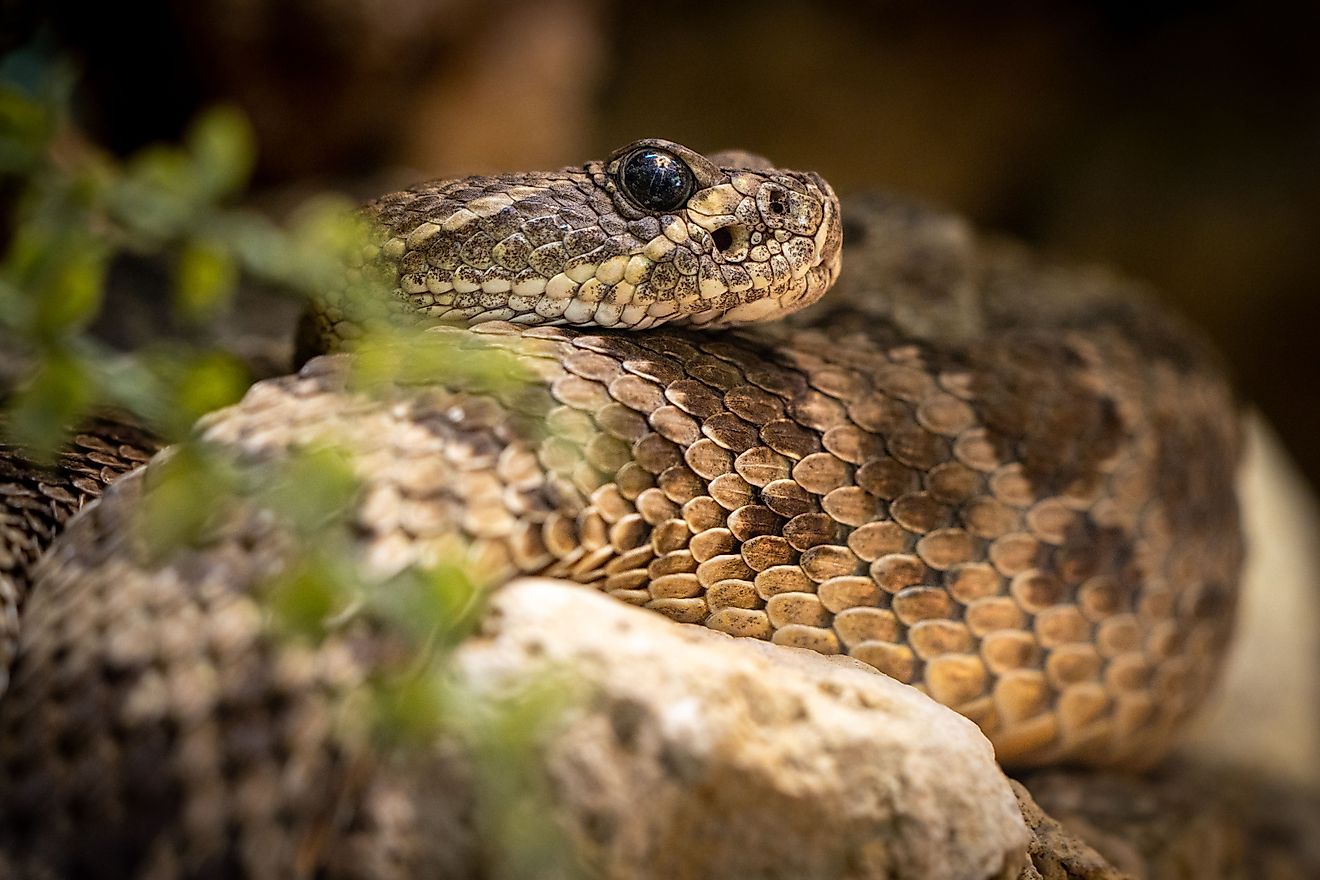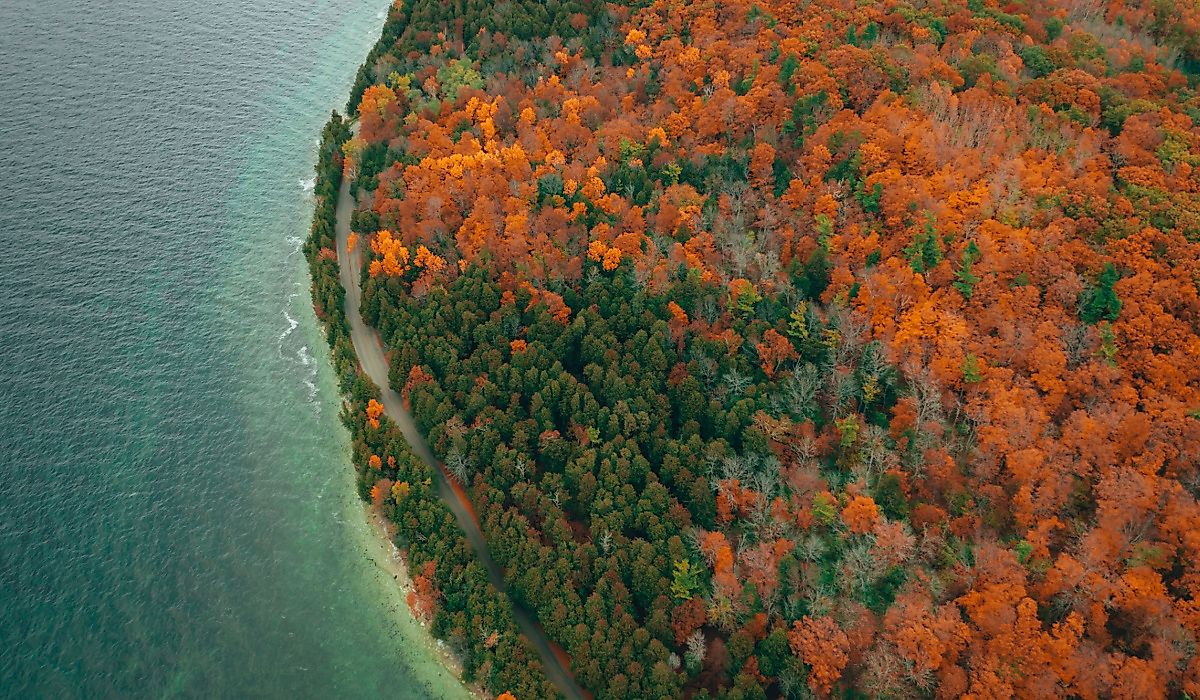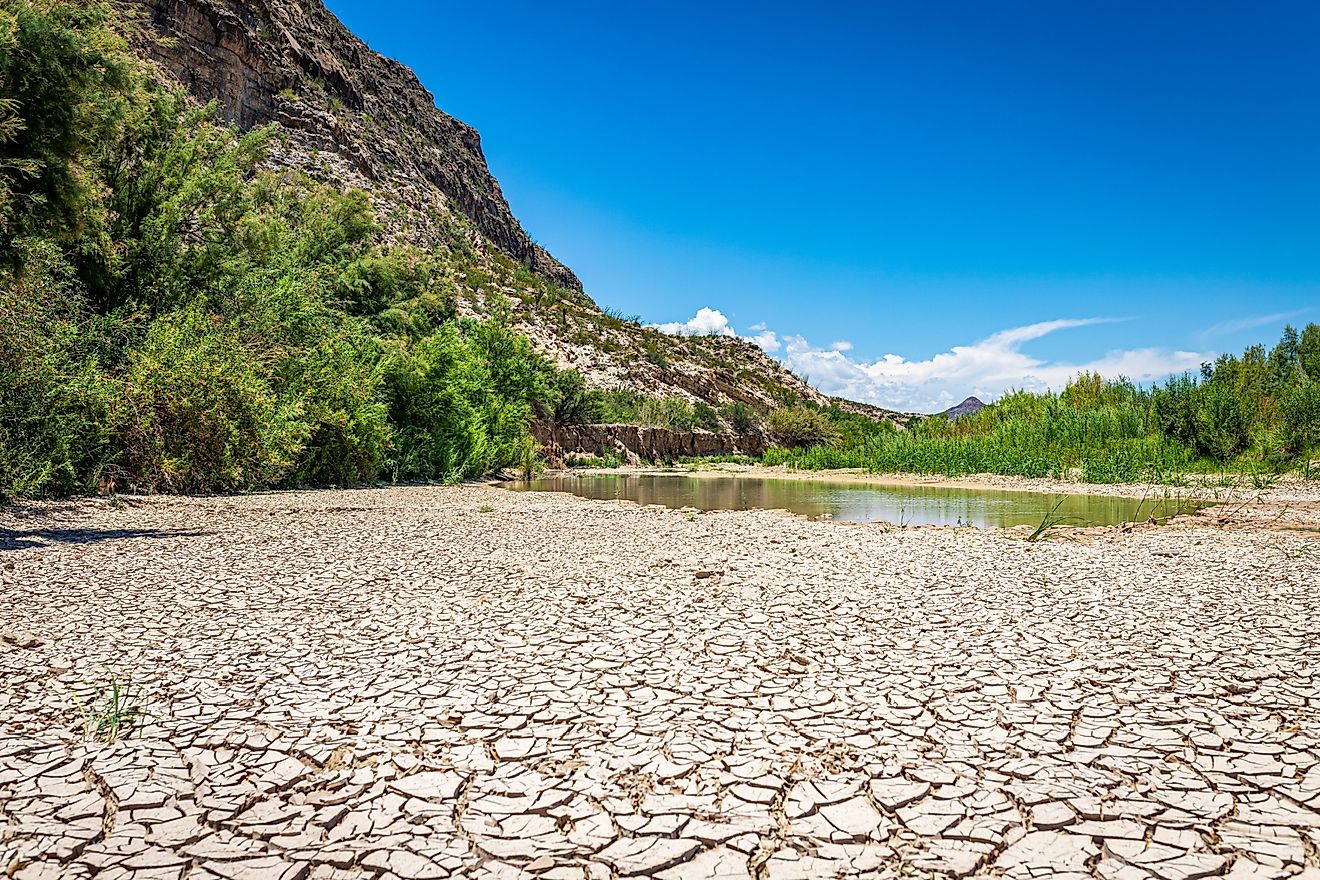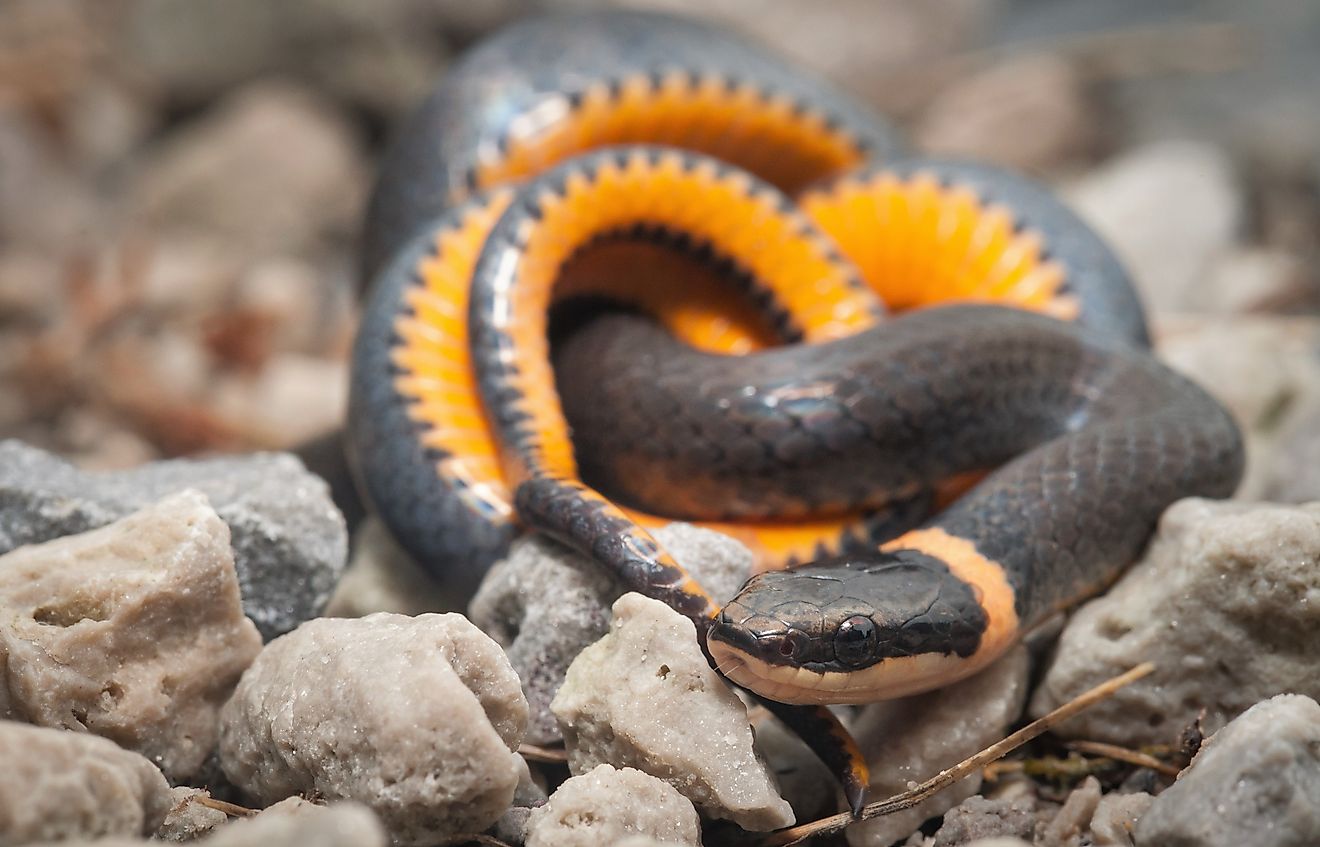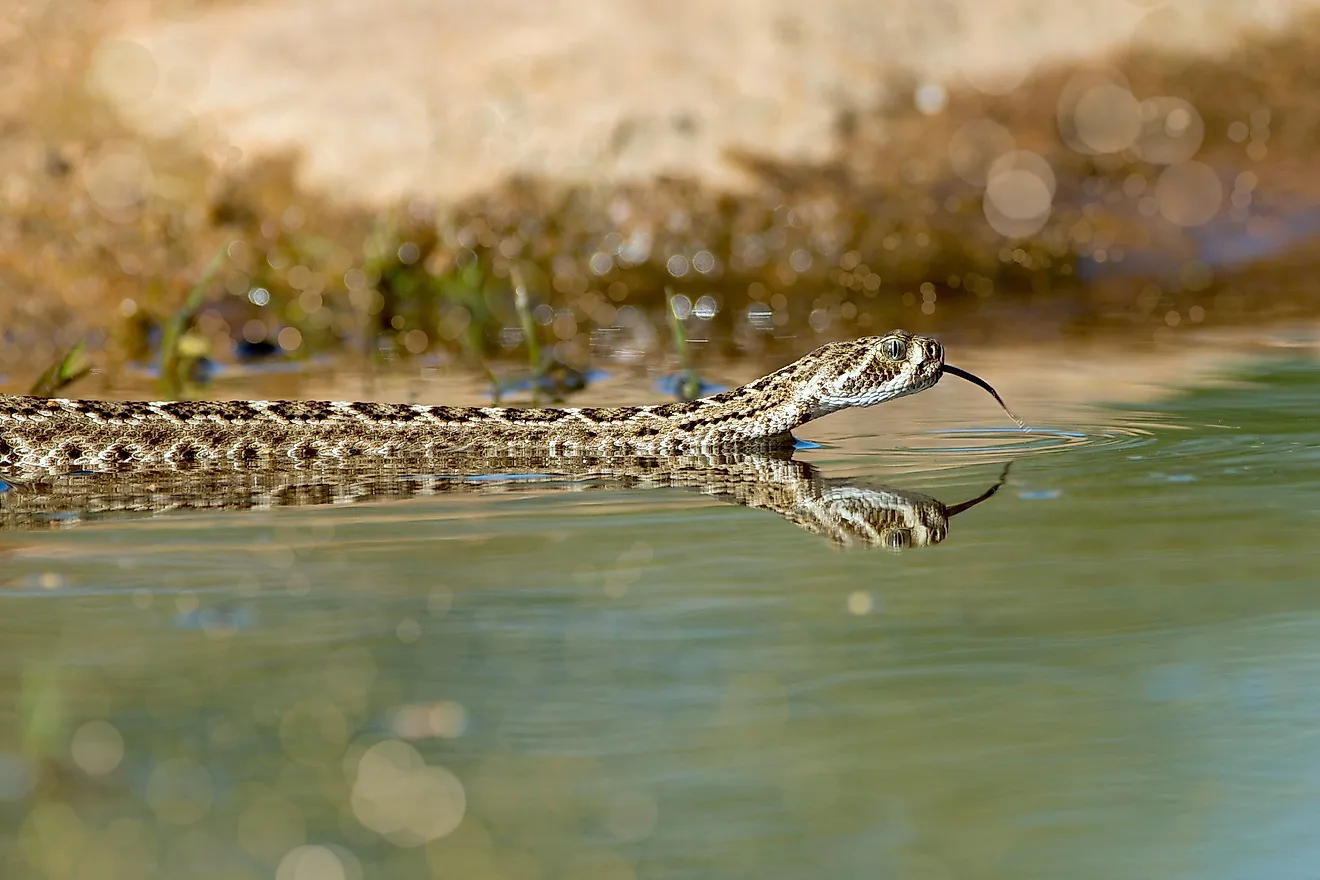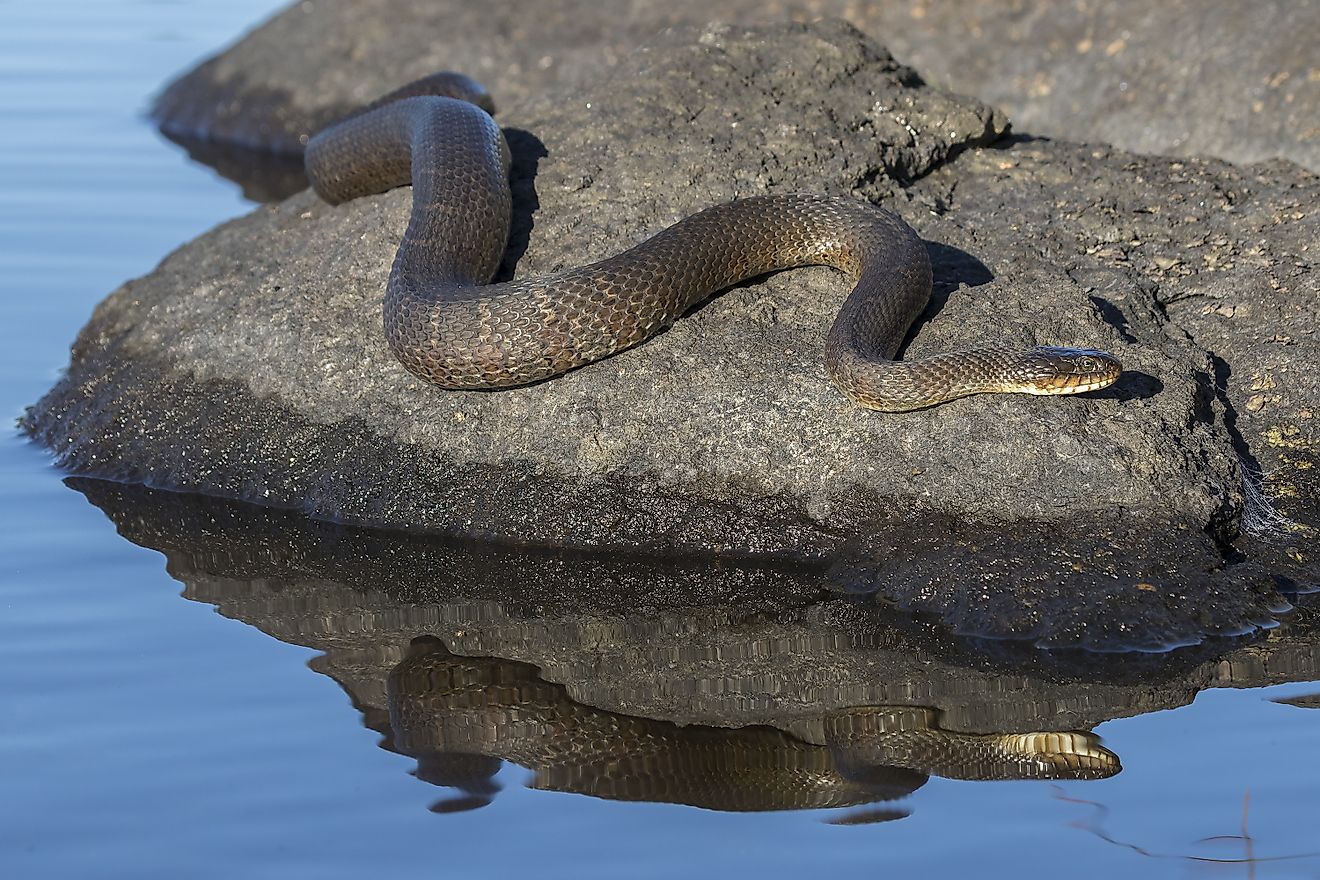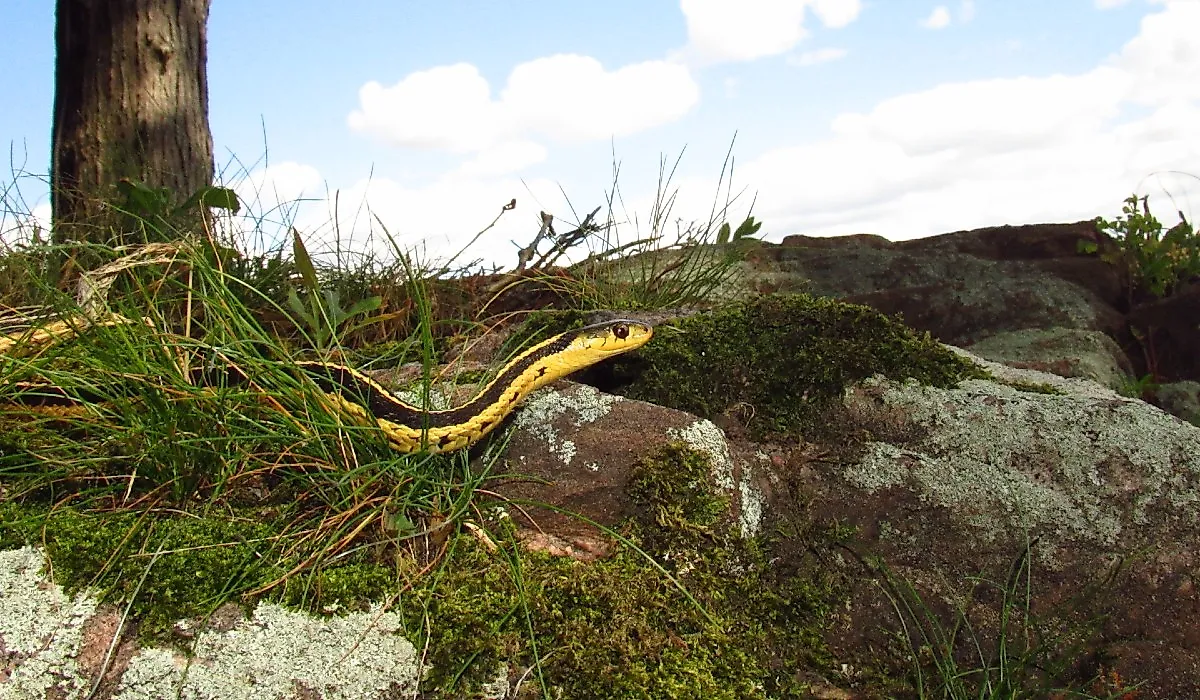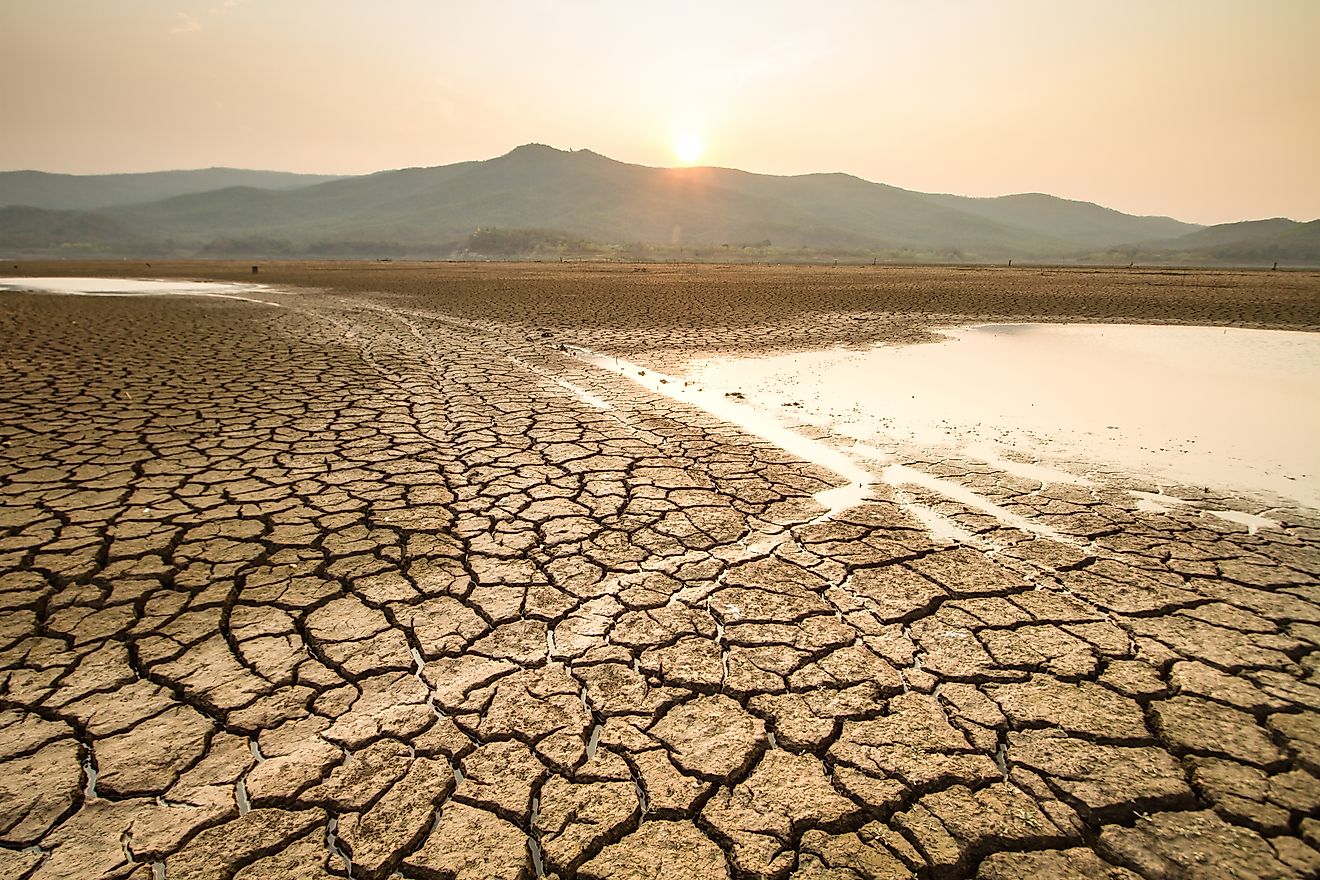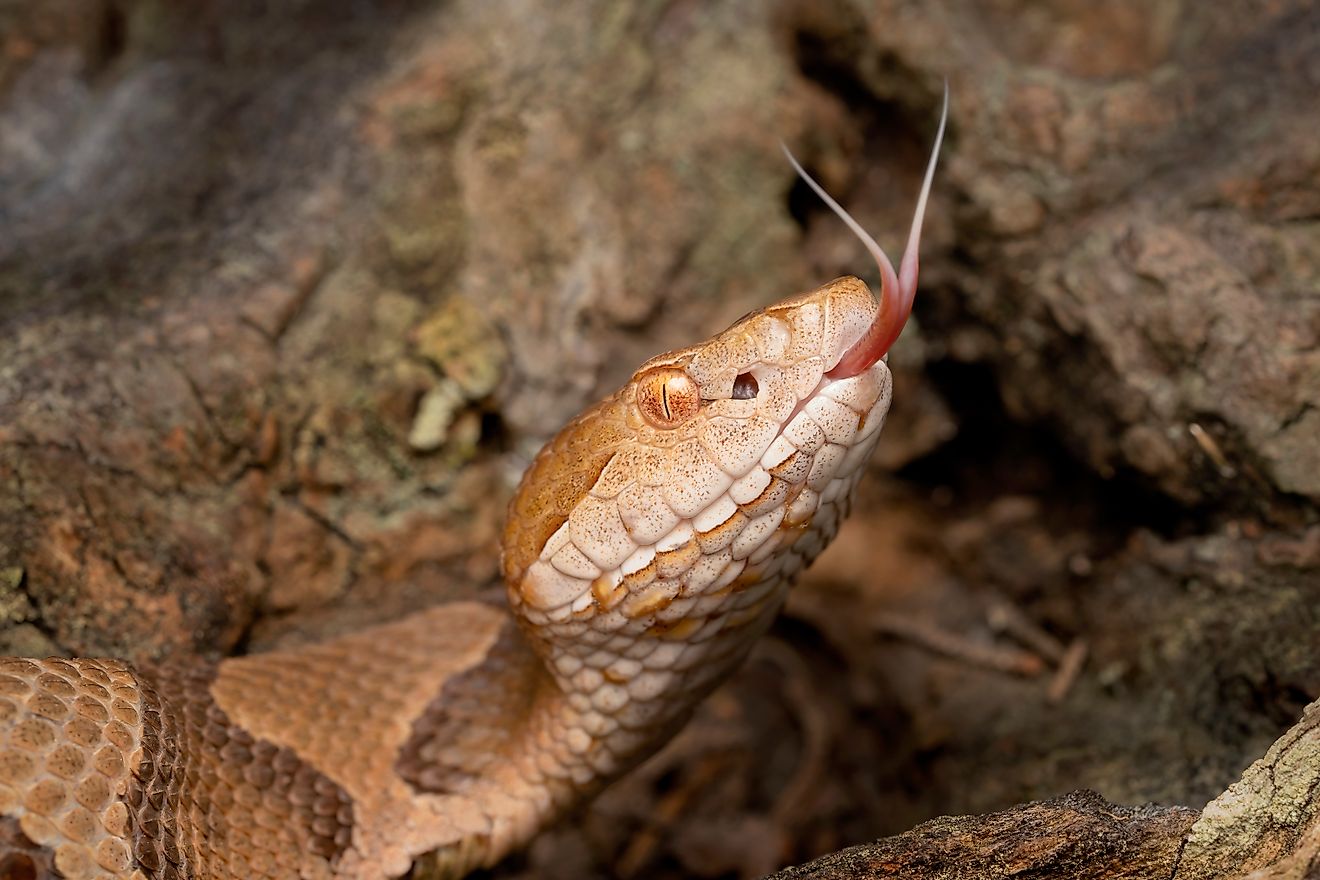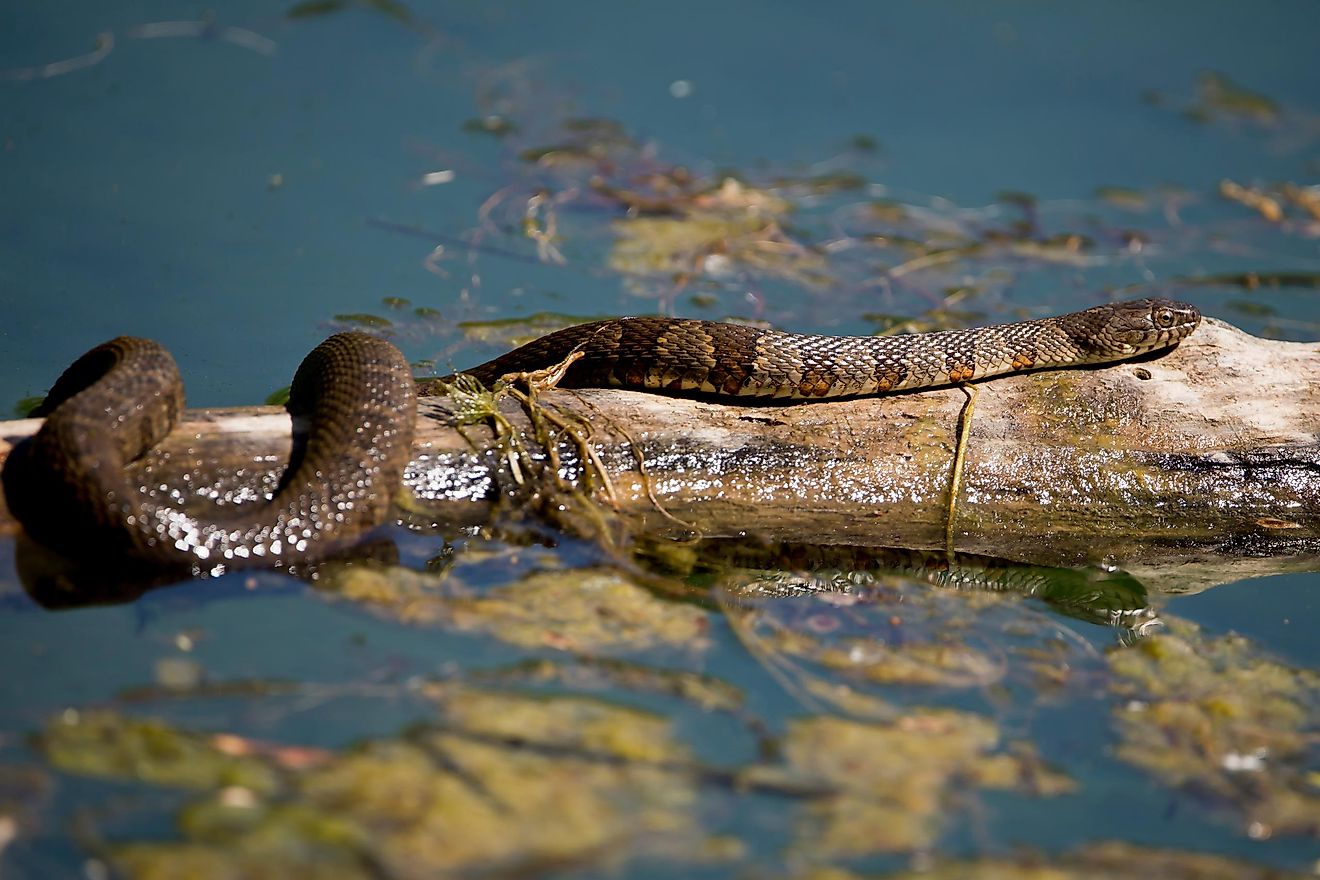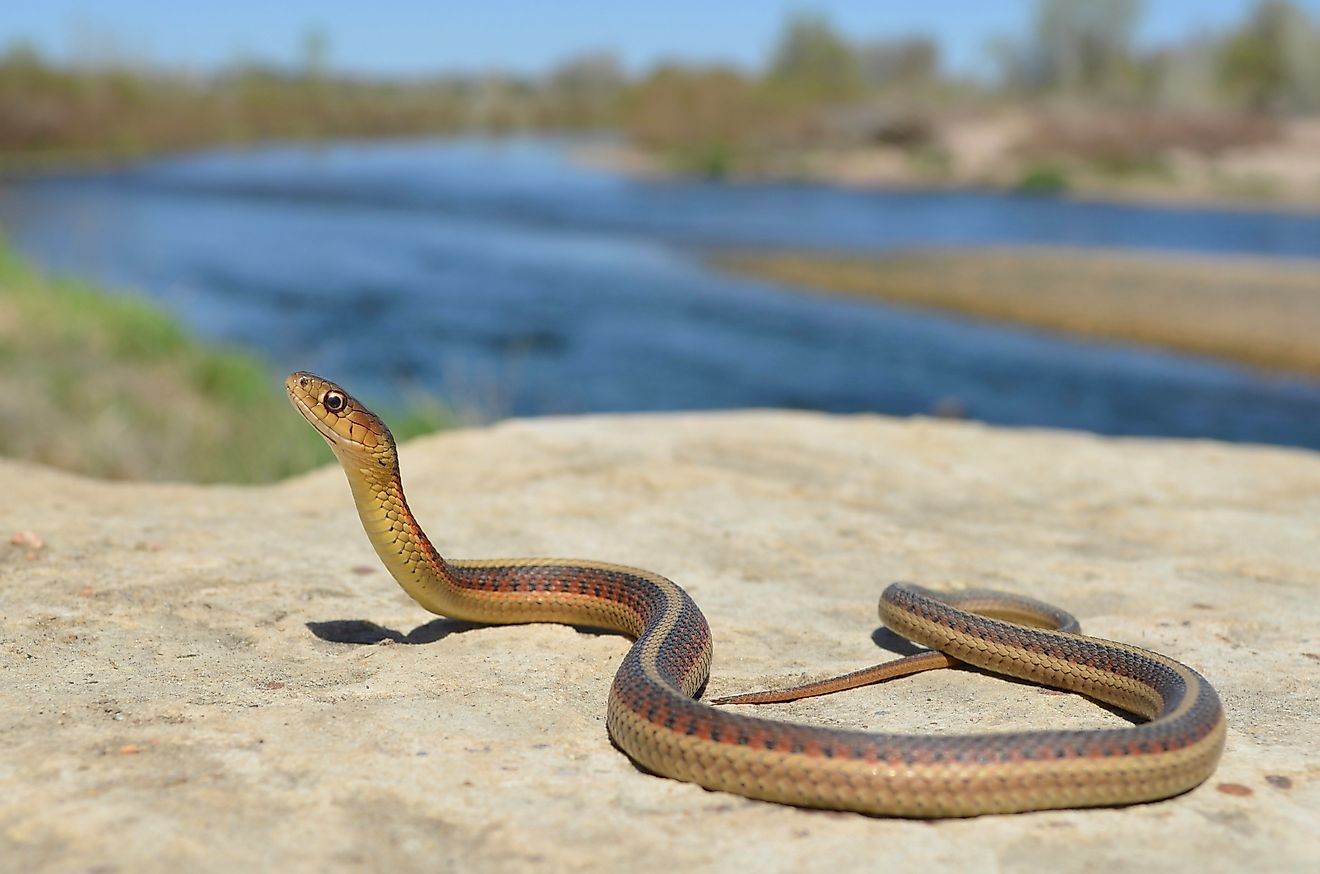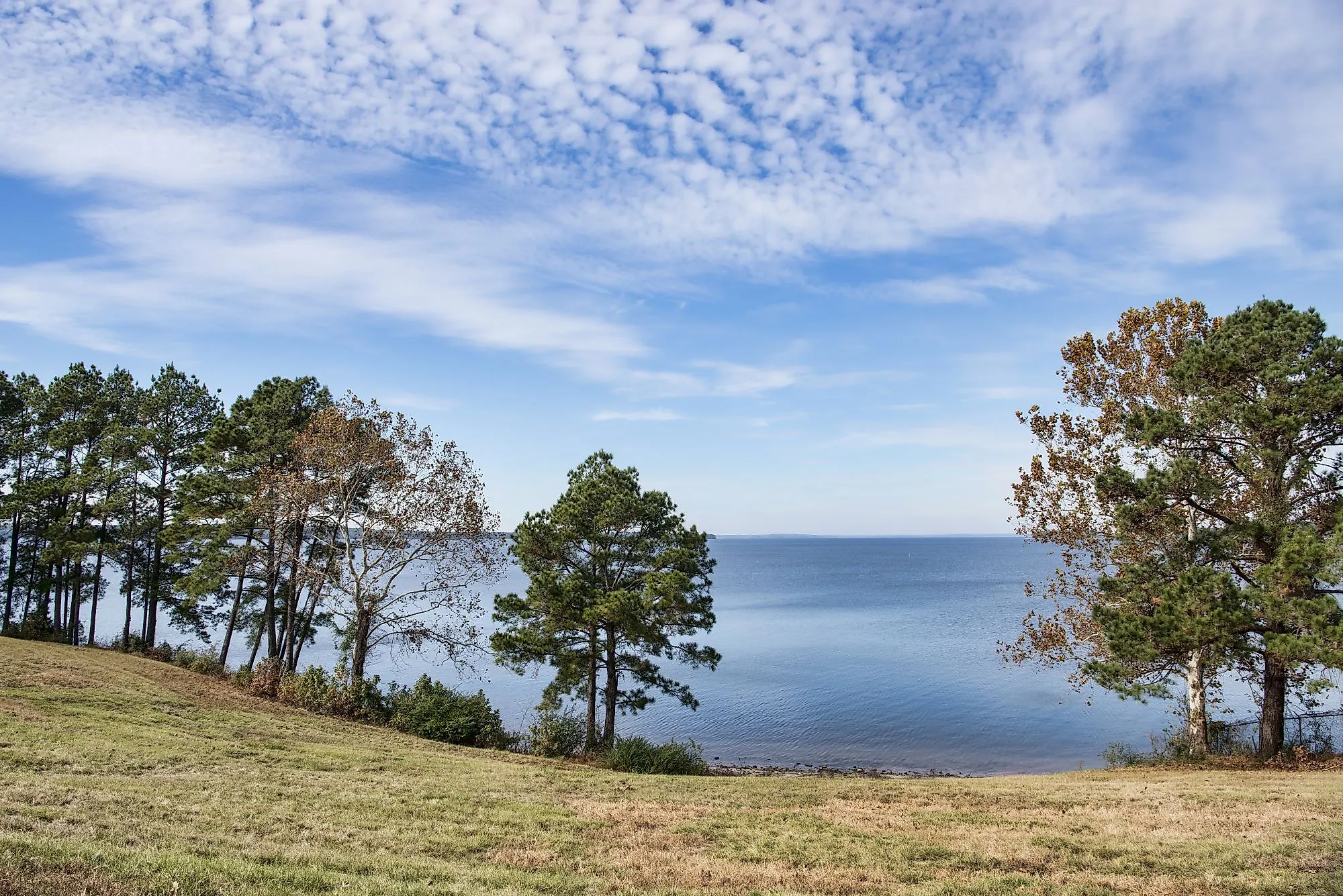
6 Most Snake-Filled Bodies Of Water In Louisiana
Louisiana’s numerous wetlands, lakes, and bayous are famous for their rich populations of wildlife, from unique flora to thriving populations of snakes. With warm, humid conditions and seemingly endless stretches of slow-moving water, the state creates a perfect habitat for both harmless water snakes and venomous species to flourish.
Whether you're fishing, boating, or simply wandering along a riverbank, chances are you’re never too far from one of these slithering reptiles. Some bodies of water, however, are much more snake-filled than others. If you’re curious (or just cautious) about this, here’s a look at the six most snake-filled bodies of water — lakes, rivers, and swamps — that you’ll come across in the Pelican State.
Atchafalaya Basin
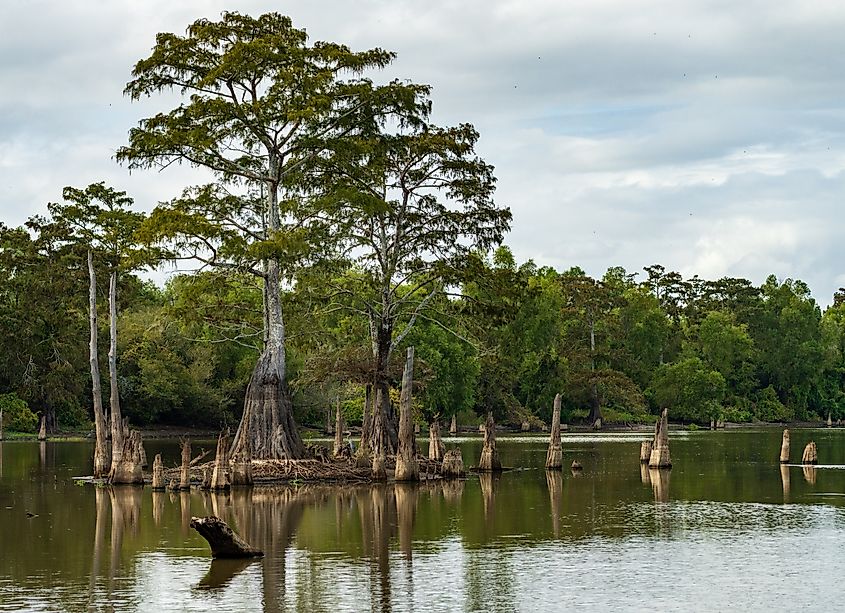
The Atchafalaya Basin, the nation’s largest swamp, spans nearly one million acres and is easily one of the most snake-populated bodies of water in Louisiana. With its web of bayous, lakes, and marshes, the basin creates the perfect environment for a wide range of snakes, from harmless water snakes to the venomous cottonmouth. The dense vegetation and slow-moving waters here make food for these snakes (including fish, other reptiles, birds, and smaller animals) plentiful, on top of allowing for lots of space to breed and generally thrive, largely undisturbed.
Many who come to paddle through the stands of cypress trees are likely to spot species like the Mississippi green water snake and the diamondback water snake sliding along fallen logs or sunning themselves on low-hanging branches. During warmer months, snake activity in the basin peaks, and sightings become especially common along the quieter, less trafficked channels.
While the Atchafalaya Basin is known for its all-around incredible biodiversity, it is also a place where caution is necessary, particularly for anyone exploring the remote backwaters on foot or by boat. So be sure to be careful while exploring, preferably with a guide who knows the area.
Lake Pontchartrain
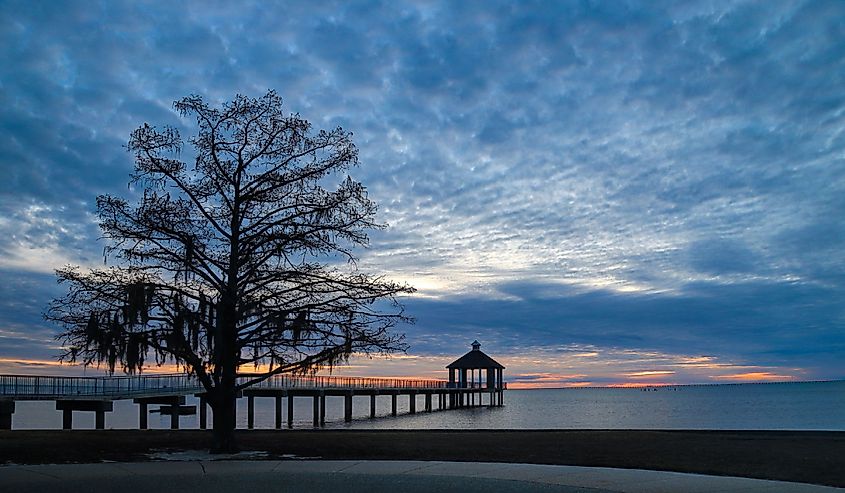
Although Lake Pontchartrain is more often associated with its exceptional fishing and boating opportunities and containing the longest bridges in the world, it is also one of Louisiana’s most snake-infested lakes. Covering 630 square miles, the lake and its surrounding wetlands offer an idyllic habitat for a range of aquatic and semi-aquatic snakes. Cottonmouths, banded water snakes, saltmarsh snakes, and broad-banded water snakes, for example, are frequently found in the marshy edges, particularly around the north shore and smaller inlets.
Although many of the snakes in and around Lake Pontchartrain are nonvenomous, the presence of cottonmouths means you should still stay alert, especially during the warmer months when snakes tend to be more active. The combination of brackish water, abundant prey, and lots of shoreline vegetation here supports large populations year-round.
Caddo Lake
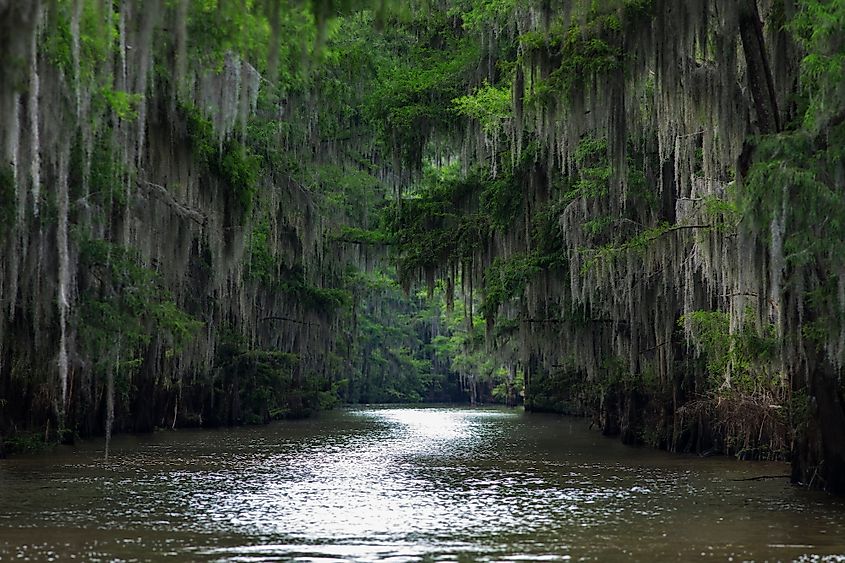
Stretching across northwest Louisiana into Texas, the sizable Caddo Lake is one of the largest naturally formed lakes in the South, sitting at around 26,000 acres. Its surrounding lands are essentially a maze of slow-moving bayous, flooded forests, and swamps that provide ideal conditions for snakes to flourish. The remote and labyrinthine nature of the lake means many areas see little human disturbance, thankfully allowing snake populations to thrive.
The cover of bald cypress trees, elegantly draped in Spanish moss, creates shady, humid areas where species like blotched water snakes, cottonmouths, and western ribbon snakes are regularly seen. Shallow waters and floating vegetation mats also give snakes easy access to prey like fish, frogs, and small birds.
Spring and summer bring a noticeable rise in activity, with snakes often spotted swimming across narrow channels or curled up on submerged logs. So, whether exploring by canoe or simply fishing along the edges, visitors to Caddo Lake should stay on the lookout for its slithery inhabitants, as it is definitely one of Louisiana’s most active environments for snake encounters.
Honey Island Swamp
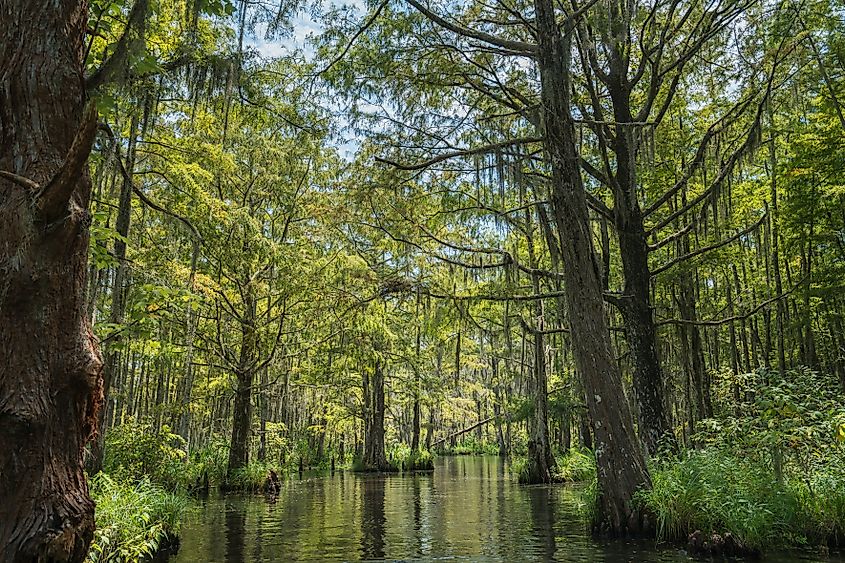
Honey Island Swamp, located near Slidell, is one of Louisiana’s most untouched wetland ecosystems and is one of its most snake-filled. The swamp's collection of cypress groves, brackish waters, and secluded marshes creates an ideal home for a wide variety of snakes.
Clearly a common species in the state, copperheads are especially numerous here, often seen floating along channels or resting on muddy banks. On the other hand, nonvenomous species like the red-bellied water snake, the eastern hog-nosed snake, and the Mississippi green water snake also thrive in the area’s tangled vegetation.
Guided swamp tours regularly report sightings, particularly during summer months when snakes are more active near the water’s surface. Visitors drawn to Honey Island’s wild beauty should, of course, be cautious, as snakes can appear quickly along both open water routes and hidden inland sloughs.
Black Bayou Lake
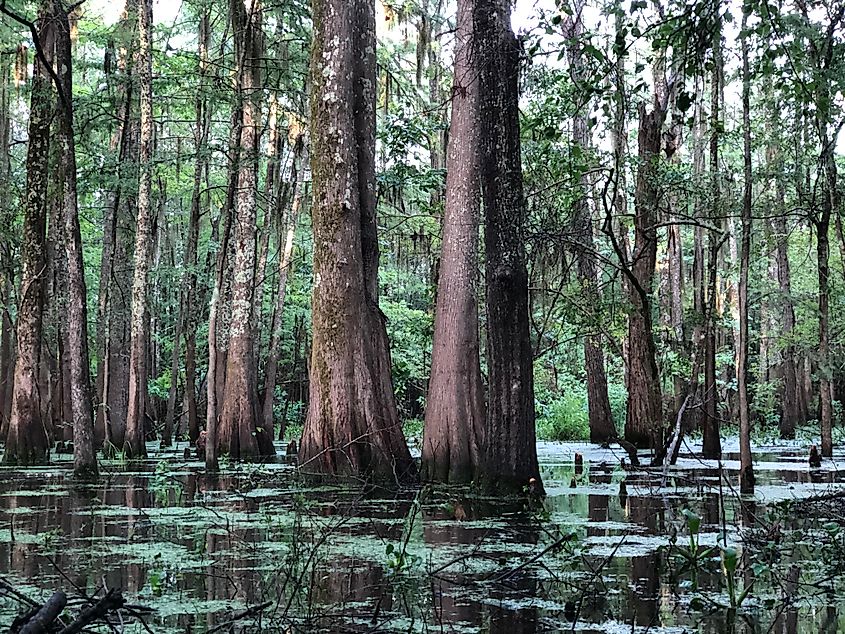
Located just north of Monroe, Black Bayou Lake is a smaller body of water in Louisiana, covering only 1600 acres, but it is still full of life. The lake’s shallow waters, diverse water-based plants, and thickly wooded shorelines form a near-perfect environment for snakes to thrive, for example.
Despite its smaller size compared to Louisiana’s larger basins and lakes, Black Bayou Lake actually ranks among the most snake-active waters in the state. The bulk of the species here are nonvenomous, with snakes such as the yellow-bellied water snake and the broad-banded water snake widespread, often seen moving through the lily pads and grassy edges.
It is located on a nationally protected refuge, and you will be able to find a network of nature trails along its shores and canoe routes on the water.
Toledo Bend Reservoir
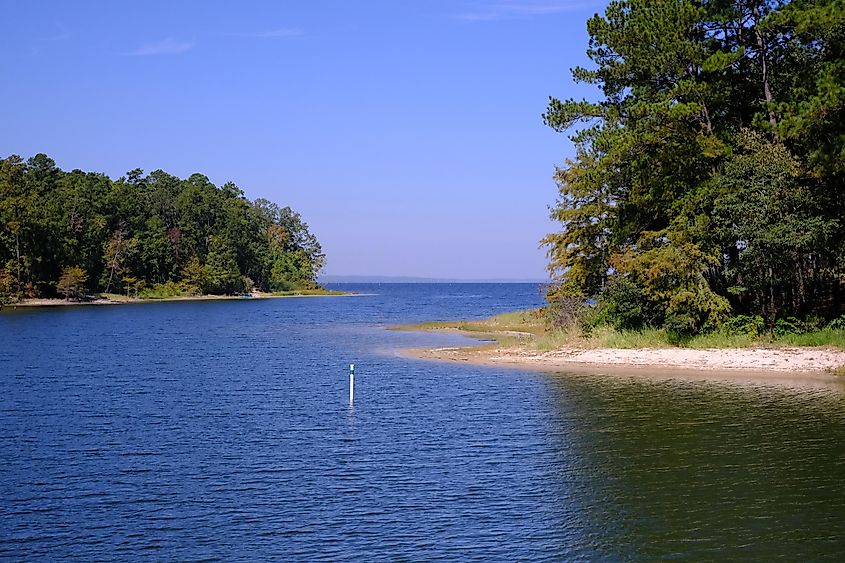
While Toledo Bend Reservoir is better known for bass fishing and recreation, its sprawling shoreline and shallow coves are also home to a significant number of snakes. Straddling the Louisiana-Texas border, this massive reservoir features a mix of submerged timber, marshy banks, and abundant aquatic vegetation.
Like most of Louisiana, cottonmouths are a frequent presence, especially around quieter inlets and swampy feeder creeks. Banded and diamondback water snakes are also fairly common, often seen gliding through the shallows or resting atop driftwood. The lake’s numerous backwater areas offer shelter, food sources, and ideal breeding conditions for these types of snakes, making encounters frequent during spring and summer.
With 1,200 miles of shoreline, much of it undeveloped, Toledo Bend provides more than enough space for healthy snake populations to exist largely undisturbed, while anglers, paddlers, and hikers can enjoy their activities safely but with caution.
Understanding Louisiana's Snake Populations
From sprawling swamps to quiet backwaters, Louisiana is a definite haven for snakes of all kinds. Environments in the six most snake-filled bodies of water — rich in both cover and prey — support some of the densest snake populations in the country. While many species are harmless, others demand caution and respect from anyone venturing into their territory. So whether you’re drawn to the wild beauty of the bayous or simply passing through, knowing where snake activity is highest can make all the difference. In this Deep South state, the line between adventure and surprise is often just a few steps away. Hopefully, with this information in hand, you can enjoy these diverse wildlands while also helping to maintain their pristine environments.
